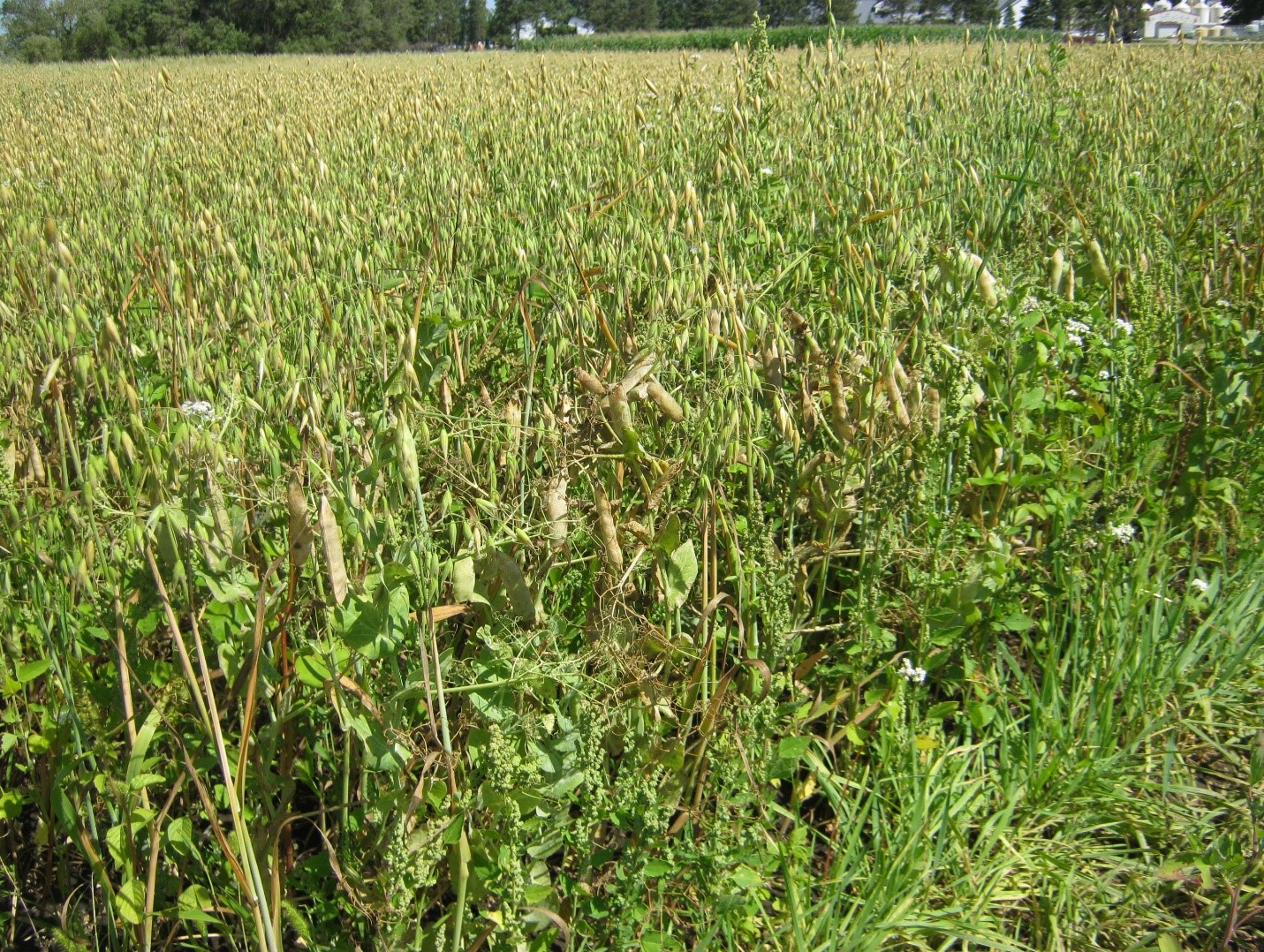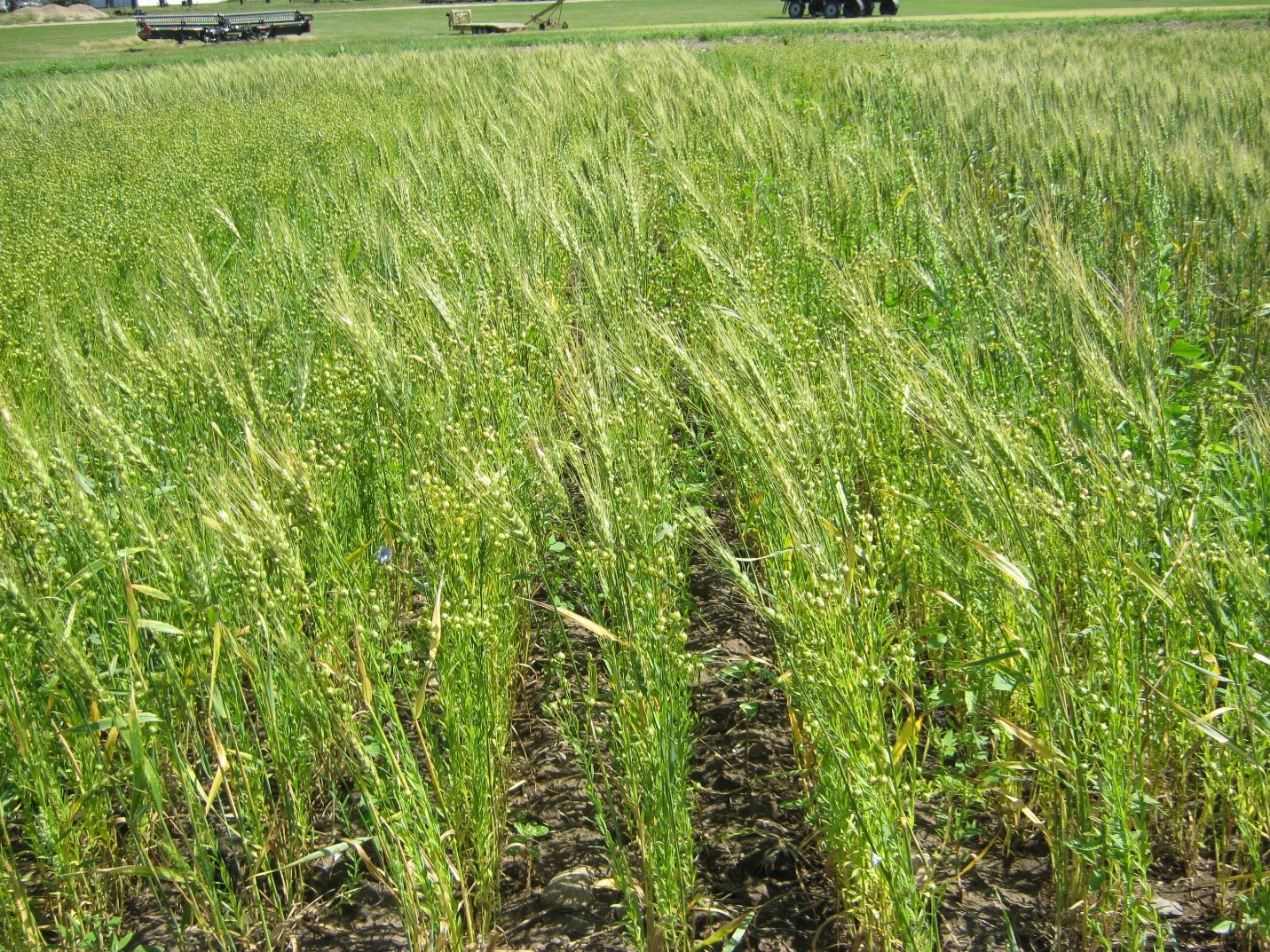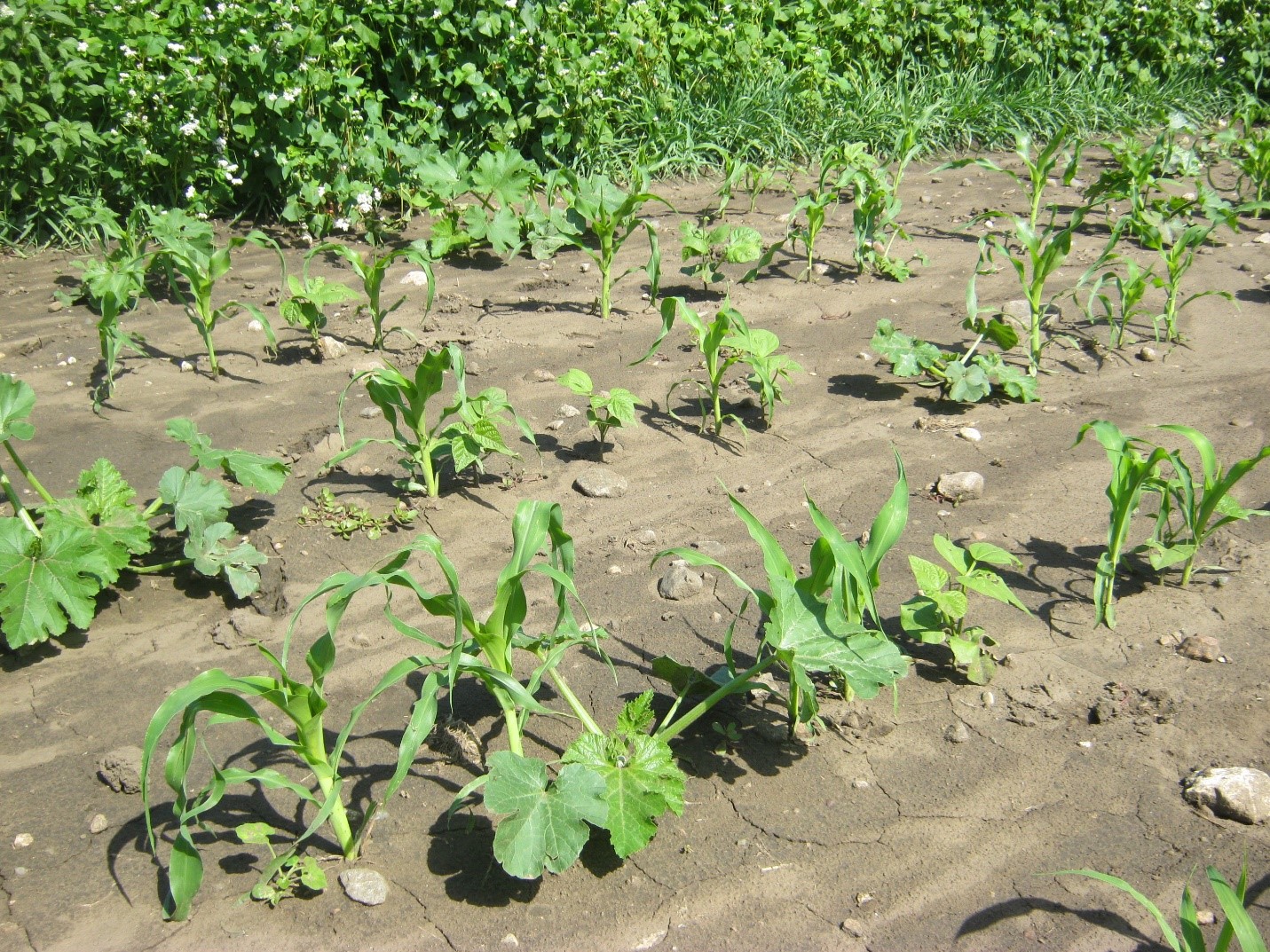Organic Intercropping Research at the CREC 2020
Intercropping is the practice of growing two or more crops together at the same time in the same field. The idea is to find combinations of plants that complement each other or perform better than when planted alone. Intercropping can lead to increased yield and quality compared to mono-cropping. Agronomic benefits from intercrop mix combinations include weed and disease suppression, along with an impact on nutrient availability. An example of two plants that benefit each other is oat pea where the oats provides support for the pea with the pea providing nitrogen to the production system. Important considerations for intercropping include: proper seeding rate/plant density for each component of the mix and variety selection to match maturity dates.
This season the organic project has two intercrop trials and a demonstration plot of intercropping. They include the oat/pea for grain trial, new this year is a wheat/flax intercrop trial and we also have a 3 sisters demonstration planted. Results will be available from these trials at a later date.
This is the third year for the oat/pea trial with slight changes made for this growing season. This year the trial is looking at more pea and oat varieties and varying the seeding rate less. Oat varieties include: Rockford, Camden and Summit. The pea varieties used are Proteca, Nette and Orka. Seeding rates for peas remain at normal (350,000 PLS/ac) across all treatments with the oats rate varying from 50 to 100% (100 % = 1,250,000 PLS/ac). The trial was planted on May 11, 2020. The oat/pea study from 2019 was written in the CREC Annual Report. You can find it by going to this link https://www.ag.ndsu.edu/carringtonrec/documents/agronomyrd/docs-2019/intercropping-oats-and-field-pea-in-an-organic.pdf. If you have a hard copy of the Annual Report you will find it in Volume 60, December 2019, pages 17-20.
 Oat/pea intercrop on July 22 starting to dry down at the NDSU Carrington Research Extension Center.
Oat/pea intercrop on July 22 starting to dry down at the NDSU Carrington Research Extension Center.
The wheat flax intercrop trial was planted on May 18 and includes 2 varieties of wheat and flax. Wheat varieties include FBC Dylan and Glenn. Flax varieties are yellow or golden Omega and the new NDSU release, ND Hammond. This trial was a tour stop on our Annual Field Day tour that was done virtually this year. You can find it here https://www.ag.ndsu.edu/CarringtonREC/field-days/Organic-sustainable%20agriculture.
 Organic wheat/flax intercrop on July 22 at the NDSU Carrington Research Extension Center.
Organic wheat/flax intercrop on July 22 at the NDSU Carrington Research Extension Center.
A demonstration planting of an intercrop planting known as “three sisters” was planted this season at the CREC. Three Sisters is commonly corn, dry beans and winter squash all planted together. We planted this combination late, on June 30, due to dry soil conditions. This is late for corn and dry beans so we improvised and planted sweet corn, green pole bean and summer squash or zucchini. The varieties used were True Gold sweet corn, Blue Lake green bean and Dark Star zucchini.
 Corn, bean and squash intercrop, known as Three Sisters, on July 22 at the NDSU Carrington Research Extension Center.
Corn, bean and squash intercrop, known as Three Sisters, on July 22 at the NDSU Carrington Research Extension Center.
Steve Zwinger
Steve.Zwinger@ndsu.edu
Agronomy Research Specialist


